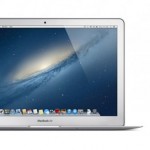
 Kim Dotcom (right) shares a lighthearted moment with colleague Finn Batato. Chris Keall A week ago, we reported that Kim Dotcom publicly accused LeaseWeb, a Dutch hosting company, of suddenly deleting all of Megaupload’s servers. The founder of Megaupload continues to fight legal battles worldwide concerning the shuttering of his file-sharing site. And he wrote on Twitter that “all user data & crucial evidence for our defense [was] destroyed ‘without warning.’” LeaseWeb, for its part, defended its actions. On Wednesday, TorrentFreak published a new e-mail from Dotcom’s attorney to LeaseWeb, showing that Megaupload did request preservation of all of its data. “Megaupload continues to request that LeaseWeb preserve any and all information, documentation, and data related to Megaupload—as destruction by LeaseWeb would appear to be in violation of amongst other things the applicable civil litigation data preservation rules and would interfere with evidence in a criminal matter all of which may subject LeaseWeb to varying degrees of liability,” Ira Rothken, Dotcom’s counsel, wrote. The passage appeared in an e-mail to LeaseWeb’s lawyer, A.H. “Bram” de Haas van Dorsser, in March 2012. Read 10 remaining paragraphs | Comments
Kim Dotcom (right) shares a lighthearted moment with colleague Finn Batato. Chris Keall A week ago, we reported that Kim Dotcom publicly accused LeaseWeb, a Dutch hosting company, of suddenly deleting all of Megaupload’s servers. The founder of Megaupload continues to fight legal battles worldwide concerning the shuttering of his file-sharing site. And he wrote on Twitter that “all user data & crucial evidence for our defense [was] destroyed ‘without warning.’” LeaseWeb, for its part, defended its actions. On Wednesday, TorrentFreak published a new e-mail from Dotcom’s attorney to LeaseWeb, showing that Megaupload did request preservation of all of its data. “Megaupload continues to request that LeaseWeb preserve any and all information, documentation, and data related to Megaupload—as destruction by LeaseWeb would appear to be in violation of amongst other things the applicable civil litigation data preservation rules and would interfere with evidence in a criminal matter all of which may subject LeaseWeb to varying degrees of liability,” Ira Rothken, Dotcom’s counsel, wrote. The passage appeared in an e-mail to LeaseWeb’s lawyer, A.H. “Bram” de Haas van Dorsser, in March 2012. Read 10 remaining paragraphs | Comments
See original article:
Kim Dotcom says Dutch firm deleted “at least 40 petabytes” of Megaupload data






